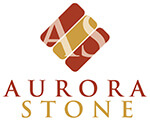
Pros and Cons of Travertine
It’s true to say that many people think that marble and travertine are the same, but in actual fact where they are derived from makes the difference. Marble is derived from a metamorphic stone as a result of limestone being subjected to an immense amount of pressure for a long period of time. Whereas, the difference in each is the variation of limestone; travertine derives from mineral springs especially hot springs. Travertine has more of a rustic look as opposed to the sophisticated look of marble.
Of course, depending on your own personal preference, travertine can prove as an excellent material to incorporate into your home, be it in the form of benchtops, tiling, stone cladding, flooring and more.
Just imagine, the Colosseum is built with almost all of travertine, which proves it can stand the test of time.
Now, no natural stone material comes without its disadvantages, just like every other natural element occurring in this world. So, the only way to find out of travertine truly is the right material for you is to consider both sides of the argument, and determine whether or not the pros outweigh the cons when it comes to your unique needs and requirements. Luckily, we’ve compiled all you need to know right here in this article:
Pros
Cheaper than Marble
Marble has a classy and elegant look that has been adored throughout many time periods. The only problem is that it can be a little expensive for the average person to incorporate into their home. So, if you’re a big fan of the look of marble, but not so much the high price tag, then travertine may be exactly the type of material you’re looking for, being the more affordable alternative in most cases. However, subject to the colour you are looking for, marble can sometimes be cheaper than travertine.
Easy to Replace
Travertine is not only fairly easy to cut into shape, but unlike most other natural tone materials, different slabs of travertine also look quite similar to one another so it’s fairly easy to match. As such, replacing chipped, cracked or broken tiles is typically a walk in the park, even when you have to fill in small or irregularly shaped gaps on the surface. Needless to say, you can rest assured knowing that the seamless look of your travertine cladding or flooring will not be disturbed by small imperfections that occur, if any.
Highly Resistant
Travertine has been used as a building material for thousands of years, including in some ancient buildings and structures that are still standing, even today! It has undeniably proven its ability to resist against the tests of time, as well as a number of extreme weather conditions and natural disasters. With this in mind, you can definitely expect travertine to last when installed in your home. What’s more, travertine is also resistant towards water and moisture. That, combined with its non-slip surface, makes travertine an excellent choice for bathroom applications in particular.
Wide Variety
You’ll find travertine available in a range of different colours and styles, ranging from ivory, cream and beige to gold, red and even silver variants! With the many options available to you, there’s no doubt that you’d be able to find the perfect solution to suit the unique design of your home, as well as your own personal tastes and preferences. In addition to this, the warm and earthy hues of travertine are sure to make your home feel all the more welcoming and in touch with nature. So, through incorporating this natural stone material, you can also work to create a more comfortable atmosphere.
Cons
High Porosity
One con of travertine is the fact that it’s a highly porous material, meaning that it’s full of little cracks and crevices. On the plus side, this is what makes travertine so easy to cut and slip resistant. On the downside, it also makes it more susceptible to staining and wear. The great news is that you can easily neutralise these cons through ensuring to maintain your travertine surfaces properly, and on a regular basis. This bring us to our second con:
Maintenance
Travertine requires regular sealing if you want to avoid the disadvantages of a highly porous natural stone material, so if you’re after a low-maintenance material, this may not be the option for you. In spite of this, learning how to seal travertine is easy. As long as you’re ensuring to use the right sealants and polishing products, and taking care to avoid acidic substances, you won’t have any reason to worry!
For high-quality travertine for your Perth home, turn to none other than Aurora Stone, the leading natural stone supplier in Perth. With over 30 years of professional experience, you can count on our team to help bring your interior design ideas to life and create your ideal living space. So, if you’re interested in learning more about the options available, don’t hesitate to get in touch with us today!

